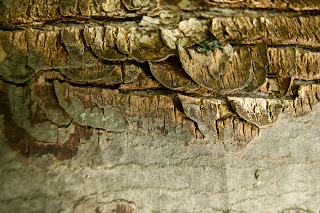Pure Energy and Neurotic Man by Barbara Morgan
Creating a good photograph involves many different criteria. Some include:
1. Photo draws your eye, catches your interest.
2. Angle or point of view.
3. Makes the viewer think or react emotionally.
4. Has a message, or pushes barriers.
5. The subject matter is interesting.
6. Tells a story.
7. Catches the ‘critical moment’ when action is at it’s pea
8. Clear focus of photo (both the sharpness and primary subject matter).
9. Design elements: composition, framing, lines, movement.
10. Lighting interesting
11. Technically proficient (exposure, focus, etc)
12. Good printing: frame, paper, size, all match content.
The above photo meets most, or all, of the numbers on the list.
- The photo draws your eye due to the high contrast and organic shapes.
- The point of view is fairly simple, as if you were standing directly in front of the scene.
- The photo may not make one react emotionally but it does make you wonder what is going on in the photo and what the artist was trying to portray.
- She pushes barriers by doing something that most photographers do not do, which is painting with light. She then adds a human element in the corner which is another thing most photographers do not do.
- The subject matter is extremely interesting as you are not quite sure what is going on. You see the light and the hand but you aren't sure why either is there or what it is meant to be doing.
- It may not tell a story, but I'm sure that one could easily be made up to go along with the photo.
- It does not catch one moment where the action is at its peak, but instead the total moments when the light was moving.
- The focus is definitely clear as they are the only lighted objects in the frame.
- She uses asymmetrical balance and rule of thirds to make her composition the strongest.
- The lighting is the main focus of the photo, and with the motion involved it adds to the interest of the photograph.
- She seems to have exposed everything for just the right amount of time. The hand is perfectly exposed with bright highlights and deep shadows as well as it being well in focus.
- I'm not sure whether this photo was originally printed on matte or glossy paper, but the glossy paper of the book seems to match it just fine. I believe it could be printed at any size and still have the dazzling effect.




















